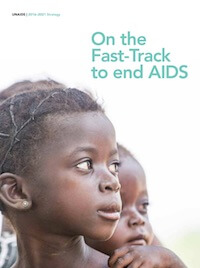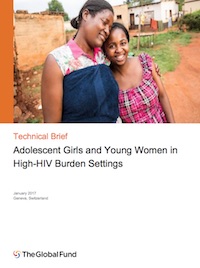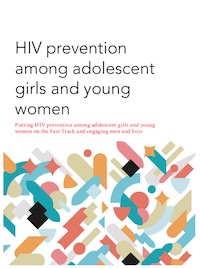Key Populations & AGYW
Key Populations
An enabling legal framework that protects and promotes human rights and gender equality is imperative to fostering the health and development of all people and attaining the United Nations 2030 Agenda for Sustainable Development and the Sustainable Development Goals. Protective laws, policies and practices support non-discrimination, equality and freedom from violence for vulnerable and key populations, allowing for rights-based health responses that promote:
- access to effective health information and services without discrimination
- reduction of health risks with appropriate prevention, treatment, care and support
- participation meaningfully in the design, development, implementation, monitoring and evaluation of services
- realization of human rights to equality, health and development
Rights-based health responses are effective, efficient and inclusive as they reach even those left further behind, such as vulnerable and key populations. Without efforts to protect and promote the right to health, health services may fail to reach vulnerable and key populations and achieve their hoped-for health outcomes.
In the Risk, Rights & Health Supplementary Report of 2018, the Global Commission on HIV and the Law notes that while new HIV infections have declined, the number of people living with HIV has risen steadily particularly amongst key populations. There are an estimated 2.7 million more people today living with HIV than there were in 2010. “Members of marginalised populations—gay men and other men who have sex with men, people who use drugs, sex workers, transgender people, prisoners, and their sexual partners—accounted for 47 percent of new infections in 2017.“ Populations who live in situations of inequality and exclusion and struggle to realise their basic human rights are vulnerable to health risks, including the risk of HIV, TB and malaria.
UNAIDS considers gay men and other men who have sex with men, sex workers, transgender people, people who inject drugs and prisoners and other incarcerated people as the five main key population groups that are particularly vulnerable to HIV and frequently lack adequate access to services.
The UNAIDS 2016–2021 Strategy calls for bold action to Fast-Track the AIDS response. It incorporates a human rights-based approach to development and aims to leave no one behind in the AIDS response. The strategy recognizes sexual and reproductive health and rights issues, calls for comprehensive sexuality education and the removal of punitive laws, policies and practices that block an effective AIDS response, including travel restrictions and mandatory testing, and those related to HIV transmission, same-sex sexual relations, sex work and drug use.
In 2016, outside of sub-Saharan Africa, key populations and their sexual partners accounted for 80% of new HIV infections. Even in sub-Saharan Africa, key populations accounted for 25% of new HIV infections in 2016.
-
 UNAIDS Strategy 2016-2021 Strategy A call to reach the 90–90–90 treatment targets, to close the testing gap and to protect the health of the 22 million people living with HIV who are still not accessing treatment.PDF 3.7 MB
UNAIDS Strategy 2016-2021 Strategy A call to reach the 90–90–90 treatment targets, to close the testing gap and to protect the health of the 22 million people living with HIV who are still not accessing treatment.PDF 3.7 MB -
WebsiteZimbabwe National AIDS Council Key Populations Programme Co-ordinating the multi-sectoral response to HIV and AIDS in Zimbabwe
Adolescent Girls and Young Women (AGYW)
Adolescent girls and young women are disproportionately affected by HIV and other sexual and reproductive health risks. Laws, policies and practices that perpetuate gender inequality, harmful gender norms and gender-based violence create barriers to access to sexual and reproductive health & rights.
Sexual and reproductive health and rights (SRHR) are essential to the well-being of each individual and to support the fulfilment of national responses to health risks, such as HIV. However, for many AGYW, this right remains unfulfilled; the Global Commission on HIV and the Law (GCHL) 2018 Risks, Rights and Health Supplement recognizes that, in global efforts to reach SDG targets, adolescent girls and young women are being left further behind.
Enabling legal environments need to prioritise laws, policies and programmes that address the human rights and gender-related factors that cause a heightened risk of HIV and other sexual and reproductive health risks amongst AGYW.
The GCHL Risks, Rights and Health Supplement recommends that governments must adopt and enforce laws that remove legal barriers to accessing the full range of sexual and reproductive health services and that protect and promote sexual and reproductive health and rights.
-
 AGYW in High-HIV Burden Settings: Technical Brief, Global Fund, 2017 Guidance to Global Fund applicants on investing strategically in AGYW in the development and implementation of HIV-related programming in the 2017-2019 funding cycle.PDF 0.7 MB
AGYW in High-HIV Burden Settings: Technical Brief, Global Fund, 2017 Guidance to Global Fund applicants on investing strategically in AGYW in the development and implementation of HIV-related programming in the 2017-2019 funding cycle.PDF 0.7 MB -
 HIV Prevention Among Adolescent Girls and Young Women, UNAIDS, 2017 Provides concepts and examples on how to understand the epidemic situation, design effective responses, deliver programmes and measure and sustain programme impacts.
HIV Prevention Among Adolescent Girls and Young Women, UNAIDS, 2017 Provides concepts and examples on how to understand the epidemic situation, design effective responses, deliver programmes and measure and sustain programme impacts.



